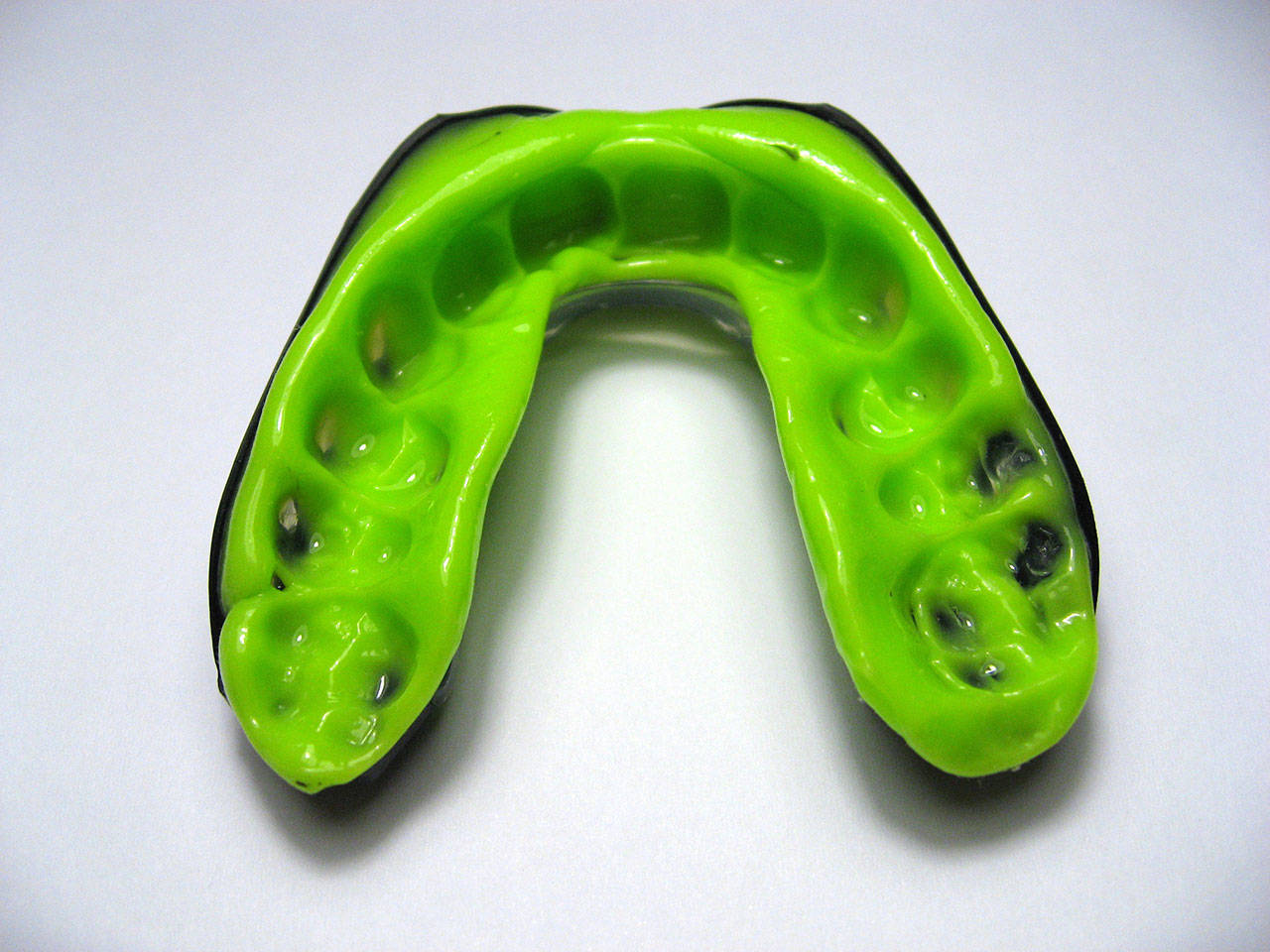By Dr. Kara McCulloch
Special to the Reporter
Spring has sprung, and the sunny weather draws us outside to participate in recreational activities as well as competitive sports. April was National Facial Protection Month; an opportunity to highlight the benefits of sports mouthguards. Did you know it is estimated that 20-25 million youths participate in competitive sports and it is reported that greater than 5 million teeth are damaged due to sports related injuries and trauma each year? In fact, sports-related injuries are reported to count for slightly greater than one-third of all unintentional injuries to children and adolescents. Of this number, about 15 percent of those injuries are to the teeth and face. While we cannot bubble wrap our children, use of a sports mouthguard can significantly reduce the incidence of dental injuries.
Sports mouthguards may also reduce the rate and severity of concussions by providing a cushion to the teeth and jaws from a blow to the face. In our practice, hardly a week goes by that we don’t see a child or adolescent who has suffered an injury to the face and teeth. While most of these injuries are minor, major injuries can bring with them a lifetime of extensive and expensive problems for the affected individual. Recent studies have shown that injuries can happen at any age or skill level. Many sports require the use of a sports mouthguard, but surprisingly, most sports still do not.
The National Sports Foundation for Safety reports that athletes are 60 times more likely to sustain damage to their teeth while not wearing a mouthguard. And, the American Dental Association states that 80 percent of traumatic injuries to the teeth affect the two front teeth, especially if they are protruding. In children with lack of lip coverage to the teeth during smiling, laughing, and talking there is significant risk that a blow to the lower face will have the potential to fracture, loosen or knock out one of the front teeth. This is most common in boys. Early orthodontic intervention and consistent use of a sports mouthguard can effectively mitigate the incidence of injury.
Dental injuries are typically divided into three categories: (1) injuries to the soft tissue, such as lacerations and bruises, (2) fractures of the teeth or jaw and (3) loosening, loss, or change in position of the teeth. If your child sustains an injury, you should seek prompt care from your dentist or local emergency room. If a tooth is knocked out, it is important to avoid disruption of the tissue on the root of the tooth and to keep the tooth in a moist environment, such as below the tongue in the floor of the mouth bathed by saliva or in milk until it can be evaluated by a dentist or orthodontist.
Mouthguard use among athletes continues to be very low. It is higher among athletes playing sports such as football and lacrosse, which mandate their use. The American Association of Orthodontists reported that 67 percent of parents recently surveyed stated that their child did not wear a mouthguard during organized sports and that 27 percent of their children had sustained an injury.
Why is this number so low? Likely because a lot of mouthguards are poorly fitting, difficult to wear, and interfere with breathing. There are 3 basic kinds of mouthguards: (1) custom made, (2) mouth formed, boil and bite and (3) stock or commercially available. The custom made mouthguard, available at most dental and/or orthodontic offices, are the best fitting, offer the best protection, and are the most expensive. They typically do not interfere with talking or breathing since they are custom fit to the individual’s teeth and bite.
Mouth formed, boil and bite mouthguards are heated and formed by the individual at home. They are relatively inexpensive and tend to fit better than stock mouthguards. These tend to wear out quickly and often need to be replaced during the season, especially if the patient is in orthodontic treatment. Stock or commercial mouthguards are generally rubber or plastic and are available in stock sizes. Among the best, particularly for the orthodontic patient, is Shock Doctor’s Ultra Braces Mouthgard, which costs about $30. Like any one size fits all item, they tend to be looser and less well fitting than the aforementioned mouthguards. But still, any mouthguard is better than none when it comes to injury prevention!
When choosing a mouthguard, fit is important. The mouthguard should not be worn over retainers or removable appliances. A custom fit mouthguard is more important when the front teeth are not covered by the lip, or if the front teeth are protruding. Do not chew your mouthguard, or cut pieces off unless directed by your dentist/orthodontist. Wear your mouthguard during practices as well as games! And consider wearing a mouthguard when riding your bike or skate board, skiing, or other recreational activities where falls can be catastrophic to your face. If you have questions, be sure to ask your dental professional or local orthodontist. And by all means, get outside and enjoy your time safely!
For more information, visit Orthodontic Associates of Mercer Island at https://mercerislandsmiles.com.




